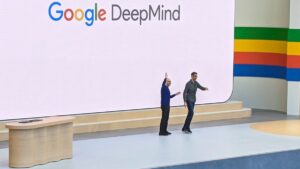OpenAI Unveils o3 and o4-mini Models Featuring Improved Reasoning and Complete Tool Access

OpenAI Launches Advanced AI Models: o3 and o4-mini
OpenAI has recently introduced its most advanced AI models to date, named o3 and o4-mini. These new models are now available to users of ChatGPT, allowing them to take full advantage of various tools such as web browsing, analysis of files using Python, visual input reasoning, and image generation capabilities.
Key Features of Model o3
Model o3 is touted as OpenAI’s most powerful reasoning system ever. It showcases exceptional capabilities across multiple domains, including:
- Programming: The model demonstrates a significant reduction in major errors compared to its predecessor, OpenAI o1. This means users can expect more reliable solutions in coding tasks.
- Mathematics: Performance in mathematical computations is state-of-the-art, making it suitable for complex calculations.
- Science & Visual Tasks: The model shows remarkable improvement in scientific reasoning and the ability to understand visual information.
These advancements make o3 a preferred choice for business consulting and creative ideation, as it can deliver robust and innovative solutions.
Features of Model o4-mini
On the other hand, o4-mini is designed for speed and efficiency. This model is particularly optimized for:
- High-volume Use: It’s ideal for users who require quick responses without compromising quality.
- Math and Coding: It excels in these areas, outperforming its earlier version, o3-mini, in important benchmarks like AIME 2025 and data science evaluations.
Moreover, o4-mini has improved its ability to follow instructions and can provide more tailored responses by referring to earlier conversations, enhancing overall user experience.
Innovative Visual Reasoning Abilities
For the first time, OpenAI’s new models can process and understand images. This capability includes:
- Analyzing Visual Content: The models can interpret photos, graphs, and even low-quality visuals.
- Tools Integration: Users can utilize features such as image rotation and zooming to help solve problems related to visual data.
These features enable users to tackle a broader range of tasks and gain insights from images.
Enhancements in Independent Task Completion
Both o3 and o4-mini have been designed to not only utilize various tools effectively but also to determine when and how to use them. This results in capabilities such as:
- Conducting Web Searches: The models can search the internet to gather information.
- Generating Code: They can write and execute code based on user inputs.
- Creating Graphs and Analyses: Comprehensive and detailed analyses can be accomplished in about a minute.
Improved Safety Measures
With these technological advancements, OpenAI has significantly bolstered safety protocols. The company has:
- Rebuilt Safety Training Datasets: This ensures that the models can detect unsafe prompts more effectively.
- Developed a Reasoning LLM Monitor: This tool enhances the ability to identify and respond to potentially harmful requests.
Both new models have demonstrated strong performance in adhering to OpenAI’s safety standards, remaining below "High" risk thresholds in categories like cybersecurity, biological safety, and self-improvement.
Accessibility for Different User Levels
The o3 and o4-mini models are now accessible to users within the ChatGPT Plus, Pro, and Team tiers. Users under the Enterprise and Edu plans will gain access in the coming week. Additionally, developers can use these models via OpenAI’s API.
Launch of Codex CLI and Support Programs
OpenAI has also introduced Codex CLI, a lightweight coding assistant designed for terminal use. To support projects involving Codex CLI, they announced a grant program offering $1 million, with individual grants of $25,000 available through API credits.
Future Plans at OpenAI
Looking ahead, OpenAI plans to merge the advantages of the o-series and GPT-series models, aiming to develop tools that integrate natural conversational abilities with advanced, proactive reasoning capabilities, further enhancing the user experience in various applications.





